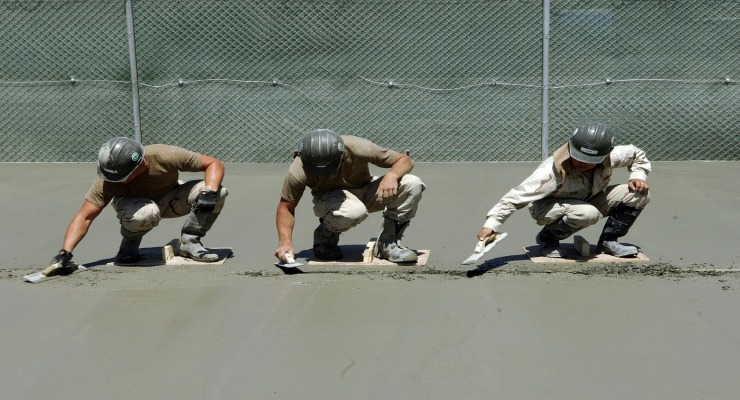How does drip irrigation system work? Where can it be used?
How to make your garden look stunning? It’s a problem of many gardeners. The secret of beautiful plants lies in taking a proper care of them. One should start from the basics, like everyday watering. It can be done the standard way, namely, using a watering can, however nowadays it’s difficult to find enough time for such mundane tasks. Why not use modern technology? Watering systems such as drip irrigation are the best way to go. What exactly is this method and where can you use drip system?
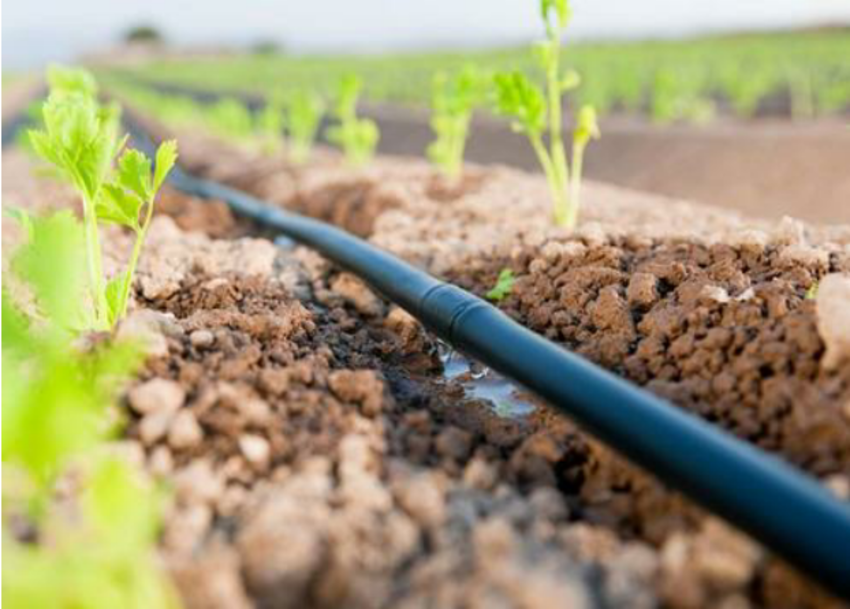
What is a drip irrigation system?
Drip irrigation is one of the most advanced method of plant watering. It involves automatic water distribution, which saves a lot of time and energy. Compared to standard methods – a watering can or a garden hose, a drip irrigation system is much more efficient.
In times when droughts are becoming increasingly regular, keeping the right moisture level is the most important part of plant care. The standard methods of watering, however, are not only ineffective but also very wasteful. Even the most experienced gardener is unable to water a plant with 100% precision, providing enough moisture without any waste. It would simply take too much time. A watering system with a drip line is a perfect solution to this problem. It uses a set of tubes to transport the exact amount of water needed.
How does a drip line work?
A drip irrigation system is a very simple installation. The core component here is a drip line – or, in some cases, a drip tape. Either of those is connected with a water source. The water flows through a system of pipes arranged on the ground. It drips out of tiny holes and moisturizes the plants – hence the name of the method. Thanks to this solution, the roots system always has access to water – across the whole area covered by the system. The moisture level can be easily adjusted by turning the tap.
What are the advantages of drip irrigation?
A drip line is a unique solution and it has many advantages. It can save a lot of time, money and resources. Why should one consider a drip irrigation system in the garden?
- Drip irrigation means saving water. With the traditional sprinkling method, water is distributed to relatively random spots. The plants are moisturized, however some of the water doesn’t get where it’s supposed to. This leads, as it has been already mentioned, to waste. Drip watering system provides water precisely where the plant’s root system is.
- It’s a system that requires minimal attention. After a drip line is installed, all one needs to do is turn on the water and adjust the pressure level. There is also another option – make the process completely automatic. To do this, a special controlling device is required. It can automatically turn on the water at a particular part of the day, for a given amount of time. The most advanced controllers can even react to changes in weather.
- The water distributed to plants is of the highest quality. A drip irrigation system should be equipped with an appropriate filter. It protects the installation, and the user doesn’t have to worry about the plants being damaged by contaminated water.
- A micro-irrigation system makes gardening much easier. It means not only easier watering, but also comfortable plants feeding. A drip line is perfect for distributing a fertiliser. To do this, one only needs to equip it with a special fertiliser injector.
- A drip irrigation system means lesser risk of plant diseases. The water is distributed directly into soil, so that it has no contact with overground parts of the plants. It prevents a spread of fungi and mould, which occurs quite often when plants are sprinkled with water from above. A drip line also eliminates the problem of sunburnt leaves.
- Such system might contribute to a better vegetable, fruit and herb harvest. A drip watering system supports a better plant care and independence from the weather conditions. There is no need to worry that a drought will destroy the crops.
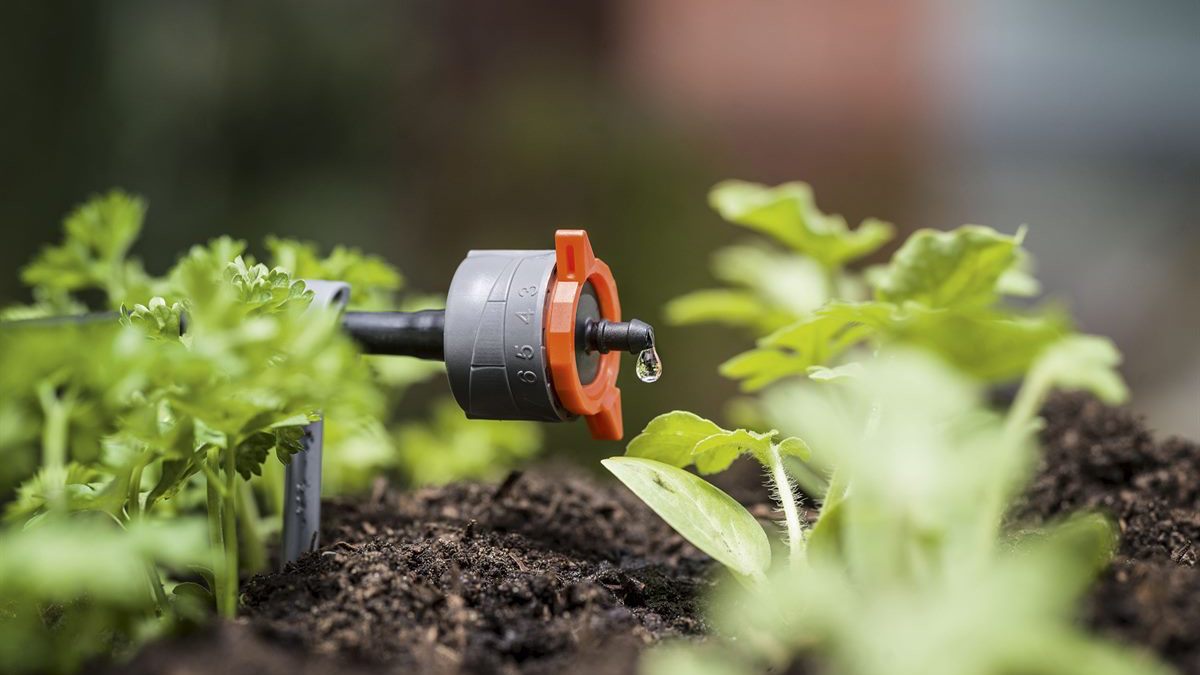
Where can one use a drip irrigation system?
Because drip lines can cover quite large areas, it’s a recommended system for croplands. It’s perfect for watering plants like strawberries, blueberries and fruit trees. The installation gives you full control over the amount of water transported to a plant. Thanks to this there is no threat of overwatering, which could cause decay of the plants. It’s an important aspect that impacts the quality of harvest.
Drip irrigation is also an ideal system for private gardens. A drip line can easily water flowerbeds, rock gardens and hedges. It’s also a good solution for potted plants. Interestingly, drip systems are becoming quite popular among balconies and patios.
A drip irrigation system is unrecommended for lawns. In this case it is rather advised to use a standard garden hose or sprinklers.
Are there any disadvantages of drip irrigation?
Despite the undeniable benefits of a drip irrigation system, one should also know its disadvantages. It’s a system that cannot be really moved around, therefore it should be used mainly for perennial plants. A drip line, like every water installation, is susceptible to dirt. It might cause clogging. Each element of the system should be maintained regularly. Another problem is the difficulty to adjust the intensity of watering for certain plants. It can be solved by using a splitter to create several independent drip lines.
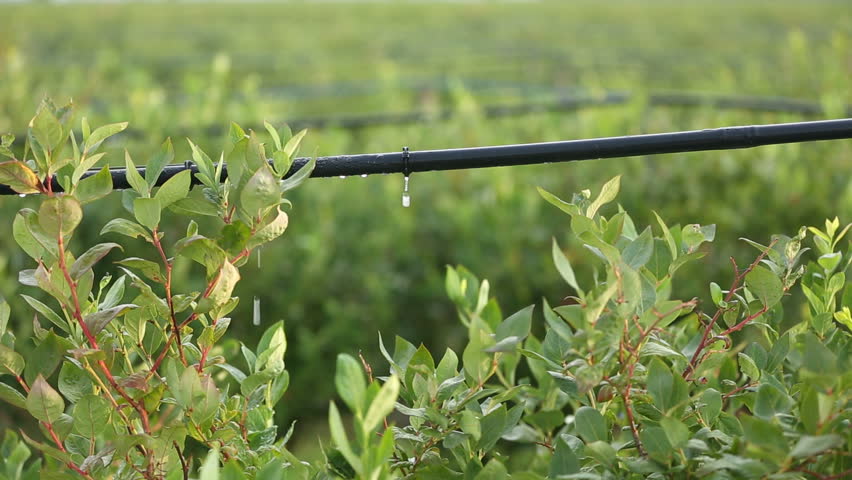
Drip watering system – what elements are needed to create an installation?
Drip irrigation is not a complicated system, and it’s not difficult to install. Before doing that, one should equip themselves with all crucial components:
- Drip line – a tube or a special tape used for watering. It’s an element that can be placed directly on the ground, or it can be covered with soil.
- Emitters – they are attached to the drip line and placed right by the plant.
- Water filter – an essential part of a micro-irrigation system. It removes any water contamination and prevents the system failures.
- Additional components – depending on the particular type of a drip irrigation system, one can use stakes for holding the drip lines and emitters as well as band clips, connectors and splitters.
- Irrigation controller – although it’s an optional element, it’s a highly recommended investment. It allows for full control and automation of the process.
A drip line – which is better: tubes or tapes?
Construction of a drip irrigation system involves making the decision on what to use for water distribution. There are several options available on the market. The most popular ones are a drip hose and a drip tape. Which is the better one? It mostly depends on what plants you are going to water and on your possibilities.
A drip tape is typically used for small vegetable and fruit crops, flower beds and potted plants. A drip irrigation that uses a system of tubes is perfect for watering hedges, smaller trees and orchards. For the last one, it is advised to combine the drip irrigation with additional water distribution points – sprinklers.
Drip irrigation system installation – how to do it yourself?
There are many companies offering the installation of drip lines. It’s useful if a drip irrigation system is going to cover a widespread area, such as a large cropland. However, if you want to install a small, uncomplicated micro-irrigation system in your garden, consider doing it yourself. It’s not very difficult.
Depending on the line you choose, place a hose or a tape on the ground. Usually, it is held by a set of special stakes. Some systems can be buried underground. Arrange the lines so that they lay right by the plants. The next step involves installing the emitters (if they are included in the system). Lastly, connect the drip line with a water source. If needed, you can also split the main line using several tubes.
The simplest drip irrigation systems are controlled by simply turning the tap on or off. Manufacturers also offer special irrigation controllers. Using them, one can plan watering for a particular day and hour. Thanks to this solution, a drip irrigation can run by itself, not requiring any special attention.
Drip irrigation system – estimated costs
Are you wondering how expensive a drip irrigation system is? As most installations of this type, the price depends on individual factors. One should estimate the area that is going to be covered by the system. This aspect dictates the number of drip lines that should be installed. The price obviously depends also on the manufacturer, therefore it is advised to compare the quality and value of available brands.
The less complicated the installation is, the less it costs. For this reason one should review all solutions that could be used. Small designs can surely give up electronic controllers, unless convenience is the priority. One can also decrease the costs by choosing to install the system by themselves.
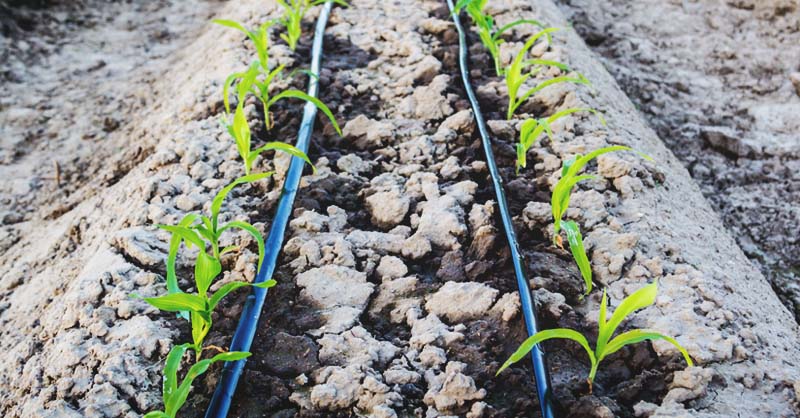
What else should one remember when installing drip irrigation?
Because all gardens are different, one should keep every detail in mind when choosing a drip irrigation system: from the shape of terrain to drip line colour. This way one can create a system that will match all needs and serve for years.
- Is your garden situated on a hill or an uneven terrain? It doesn’t mean that drip irrigation is not for you. Just use a pressure regulator – a device that will allow the water to flow upwards.
- Remember the emitters arrangement depends mostly on the type of soil your plants grow in. The more loose the ground is, the more emitters you need. If the soil is quite dense, place them more sparsely to prevent water retention.
- What hose colour to choose? The most popular drip lines are available in neutral tones: green, black or brown. This way one can easily mask the tube, increasing the aesthetics of the garden. You could also choose stronger colours and expose the hose for decorative purposes.
- What do to with the drip lines after the season? The equipment should be put away for winter to avoid damage from the weather conditions.
- You have expanded the crops area and now the drip irrigation system covers it only partially? You can always extend the drip lines. To do this, use special connectors.
A drip irrigation system is a perfect solution for every garden. Thanks to it you can easily and effortlessly take care of your plants. A drip line means not only time and money saved, but also a beautiful and healthy garden. It’s a universal system that can be used both for professional farming as well as for private gardens, balconies and patios.
FAQ
What is drip irrigation?
Drip irrigation is one of the modern methods of plants watering. It's much more efficient than traditional watering and it can save a lot of time, money and resources.
How a drip irrigation system works?
A drip irrigation system consists of a drip line – a hose or tape and a water source. The water flows through the line and drips out of small holes. It's a solution that provides the plants a perfect amount of water.
How to make a cheap drip irrigation system?
All you need to make a cheap drip irrigation system is a drip line and a source of water. Put the drip hose or tape right by the plants so that the water can flow directly to their roots. Then connect the line with water source and adjust the pressure.


